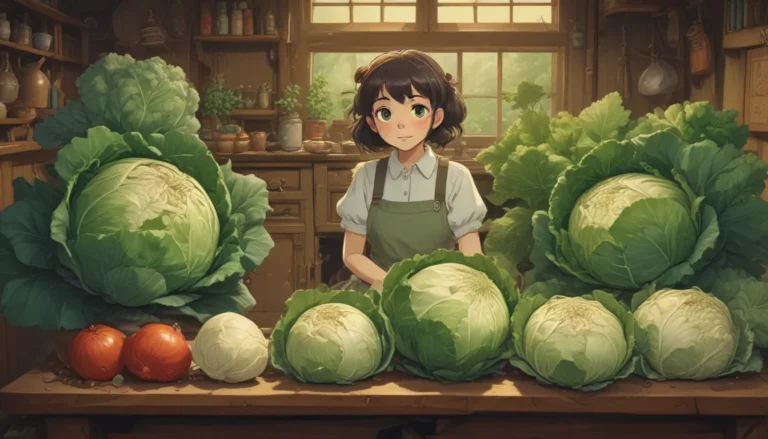Comprehensive Guide to Growing and Caring for Sweetheart Hoya

Are you looking for a long-term relationship with a houseplant that will charm you with its big, green, heart-shaped leaves and fragrant blossoms? Look no further than the sweetheart hoya. This delightful plant, also known as Valentine hoya, is not only a stunner but also incredibly easy to care for and propagate.
In this in-depth guide, we will cover everything you need to know to cultivate and care for your sweetheart hoya, ensuring it remains a faithful companion for many years to come. From its cultivation and history to propagation, growing tips, pruning, cultivars to select, managing pests and diseases, and much more, we’ve got you covered.
What You’ll Learn
- What Is Sweetheart Hoya?
- Cultivation and History
- Propagation
- How to Grow
- Growing Tips
- Pruning and Maintenance
- Cultivars to Select
- Managing Pests and Disease
- Best Uses
- Quick Reference Growing Guide
What Is Sweetheart Hoya?
Sweetheart hoya, scientifically known as Hoya kerrii, is an epiphytic plant native to countries like Cambodia, Java, Laos, Malaysia, Thailand, and Vietnam. With its heart-shaped leaves and showy flower clusters, this plant is a popular choice for both indoor and outdoor cultivation.
The thick, succulent leaves of H. kerrii store water during times of drought, making it a low-maintenance plant. Its vines can grow impressively long, reaching up to 10 feet or more, adorned with fragrant star-shaped flowers that are creamy white with russet centers.
Cultivation and History
Named after the Irish botanist Arthur Francis George Kerr, Hoya kerrii is closely related to other hoya species and cultivars like H. obovata and H. carnosa ‘Tricolor.’ This plant belongs to the Apocynaceae or dogbane family and shares similarities with milkweed plants, producing a latex-like sap when damaged.
Valentine hoya is typically grown in chunky succulent potting mix with excellent drainage to mimic its native epiphytic habitats. It thrives in bright, indirect light and prefers temperatures between 65 and 80°F.
Propagation
One of the highlights of growing sweetheart hoya is its ease of propagation. You can propagate this plant from leaf cuttings, stem cuttings, or through layering. While leaf cuttings are a common method, stem cuttings can also be successful, and layering is an effortless way to propagate your plant.
When propagating from leaf cuttings, ensure to include some of the node attached to the cutting for optimal results. And when starting cuttings in water or growing medium, maintain moist conditions until roots develop.
How to Grow
To ensure your sweetheart hoya thrives, provide bright, indirect light, allow the soil to dry between waterings, and use a chunky succulent potting mix. The plant’s temperature preferences range from 65 to 80°F, and it can tolerate moderate humidity levels.
Regular cleaning of leaves, occasional fertilization with gentle options like worm compost tea, and trellising or staking for support are additional care tips to keep your plant healthy and happy.
Pruning and Maintenance
Pruning your sweetheart hoya is not essential unless for reshaping or propagation purposes. Cleaning the leaves regularly with a damp cloth, occasional fertilization, and trellising for support are part of the maintenance routine. When repotting your plant, ensure the right time, well-draining soil, and suitable pot size to prevent root-bound conditions.
Cultivars to Select
Sweetheart hoya offers exciting cultivars to choose from, such as ‘Albomarginata,’ ‘Albomarginata Reversed,’ and ‘Splash,’ each featuring unique leaf patterns and variations. These cultivars can add diversity and visual interest to your plant collection.
Managing Pests and Disease
While sweetheart hoya is relatively resistant to pests and diseases, common issues like aphids, mealybugs, scale insects, and fungal diseases can occur. Regular monitoring, early detection, and appropriate treatments such as neem oil for pests and fungicides for diseases can help keep your plant healthy.
Best Uses
Sweetheart hoya is an ideal houseplant for gifting during Valentine’s Day, thanks to its heart-shaped leaves. It can be grown in hanging baskets, on trellises, or as an indoor decorative plant. Being nontoxic, it is safe for homes with children and pets, and if you live in USDA Hardiness Zones 10a to 11b, you can grow this plant outdoors year-round.
Conclusion
Your journey with the sweetheart hoya is just beginning, and this guide has provided you with a comprehensive overview of cultivation and care practices for this delightful plant. By following the tips outlined for propagation, growing, pruning, and maintenance, you can ensure a lasting and rewarding relationship with your Valentine hoya.
If you have any personal tips or experiences growing sweetheart hoya, feel free to share them in the comments below. Your love for plants is immense, and your sweetheart hoya will certainly appreciate the extra care and attention. Cheers to your flourishing plant companion!





